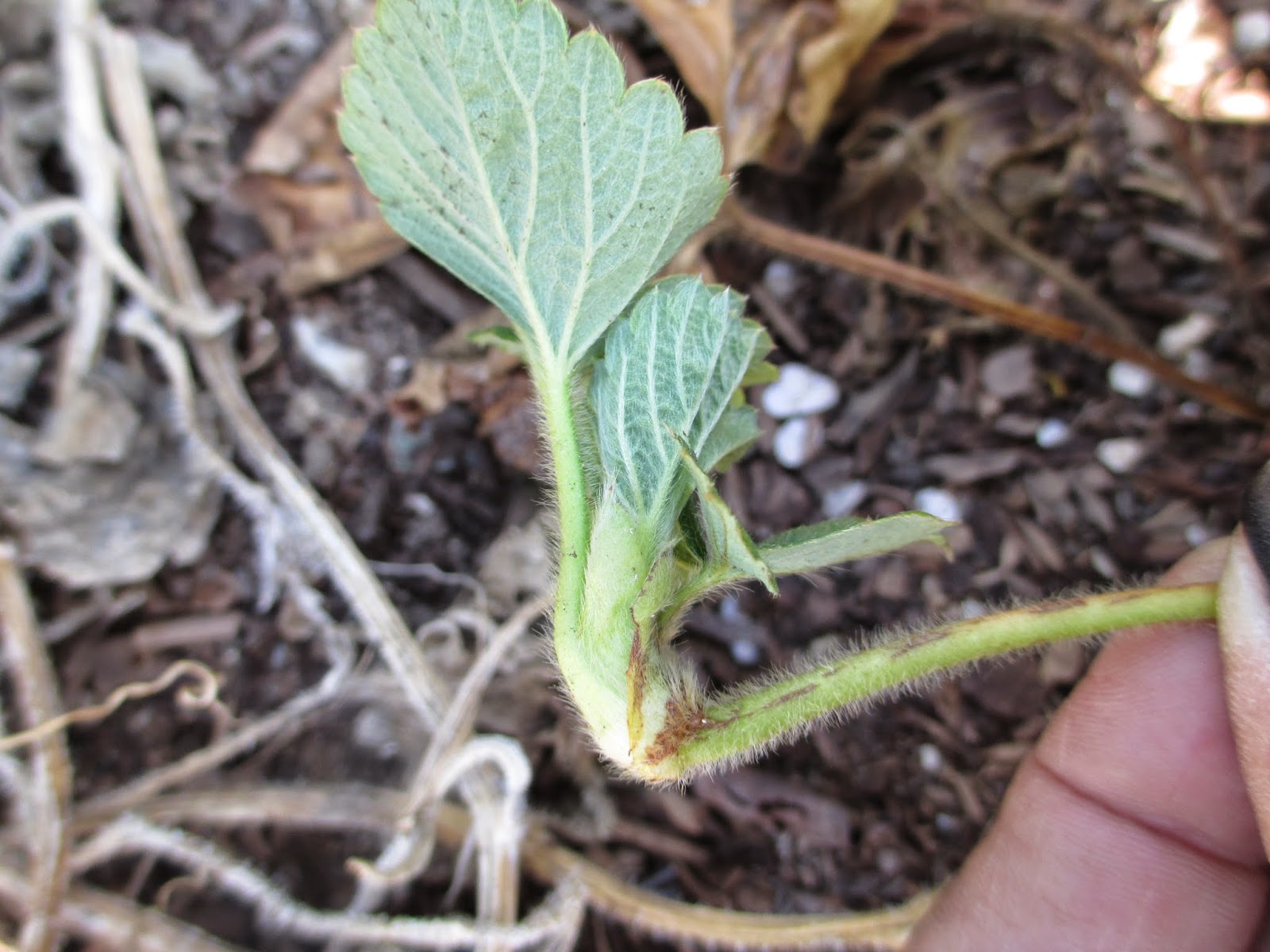The strawberry plants have sent out their runners so it's time to transplant them into a new bed I've prepared. Last year I started with 12 small plants in one of my garden beds and they are spreading. My vision is to have strawberries filling some of the empty spaces on our property; an edible landscape of divine tastiness. Instead of buying more plants, I'll use what I have. I prepared one of my empty beds and today is transplanting day. The garden has a way of telling you when it's time for a certain chore. When the strawberry runners have started to take root, it is time to transplant them.
Fall is the ideal time to transplant things in my neck of the woods. Living in Southern California means gardening year-round. By transplanting in the fall when the soil is still warm, the plants are encouraged to grow roots before the soil cools. They put their energy into growing roots instead of leaves. Then over the cooler months of winter the plants will rest. When spring comes, the plants have already established their root systems and they are ready to grow.
Strawberries propagate by sending out side shoots, or runners (stolons).
 |
| This mother plant has several runners. |
At the end of the runner, a new baby plant starts to grow. Initially there are leaves but no roots, like this one.
Since it has no roots yet, this baby gets its nutrients from the "mother" plant through the runner: it's like an umbilical cord. To transplant this baby, you must transplant it together with the mother and leave the umbilical stem attached since the baby cannot sustain itself until it develops roots of its own.
This baby has a root system. It is ready to live on its own so I cut the runner close to the crown.
The crown is the area where the roots, stems and runners meet, shown in the center of this photo.
Before digging up the plant, I start by looking at the babies. If there are no roots, I know I must keep it attached to the mother plant. If the baby has roots, I cut the runner and dig up the baby separately.
Here are the basics of transplanting:
The idea is to try to dig up the entire root system without disturbing the roots. To do this, try to imagine how big the root system is. The bigger the plant, the bigger the root system. Stick your trowel straight into the soil then remove it and stick it in again, going all around the plant.
Now you are ready to carefully lift the plant and roots out of the ground. Take care to keep the soil and roots intact.

My soil is very light, so most of the soil fell away from the small root system leaving bare roots. That is not a problem as long as it is transplanted into the new soil very quickly so the plant does not dehydrate.
Cut away any dead or dying leaves. If a leaf is dying, it is best to remove it so the plant does not put energy into sustaining that leaf. Instead it will put effort into growing roots.
 |
| Before pruning |
 |
| After pruning |
Dig a hole large enough to accommodate the roots without crowding them, and gently arrange the roots trying to keep the roots in their original shape. This will decrease the transplant shock.
Cover the roots with soil taking care that the crown of the plant is even with the surface of the soil. The plant should be buried to the same depth as it was previously growing.
For those baby plants that have not yet sprouted roots, place the crown on top of the soil then slightly bury the runner and crown to encourage the baby to take root.
Again taking my cues from the plants themselves, I place the transplants 9 to 12 inches apart. This is how long the runners generally are, so that is the distance the plants seem to want to have between momma and baby.
Water the plants well, and keep them moist. Remember that the roots are small and shallow, so don't let the surface soil dry out.
They look happy, don't they?
And I'll be even happier next June when I'm picking those luscious berries!














I was diagnosed as HEPATITIS B carrier in 2013 with fibrosis of the
ReplyDeleteliver already present. I started on antiviral medications which
reduced the viral load initially. After a couple of years the virus
became resistant. I started on HEPATITIS B Herbal treatment from
ULTIMATE LIFE CLINIC (www.ultimatelifeclinic.com) in March, 2020. Their
treatment totally reversed the virus. I did another blood test after
the 6 months long treatment and tested negative to the virus. Amazing
treatment! This treatment is a breakthrough for all HBV carriers.